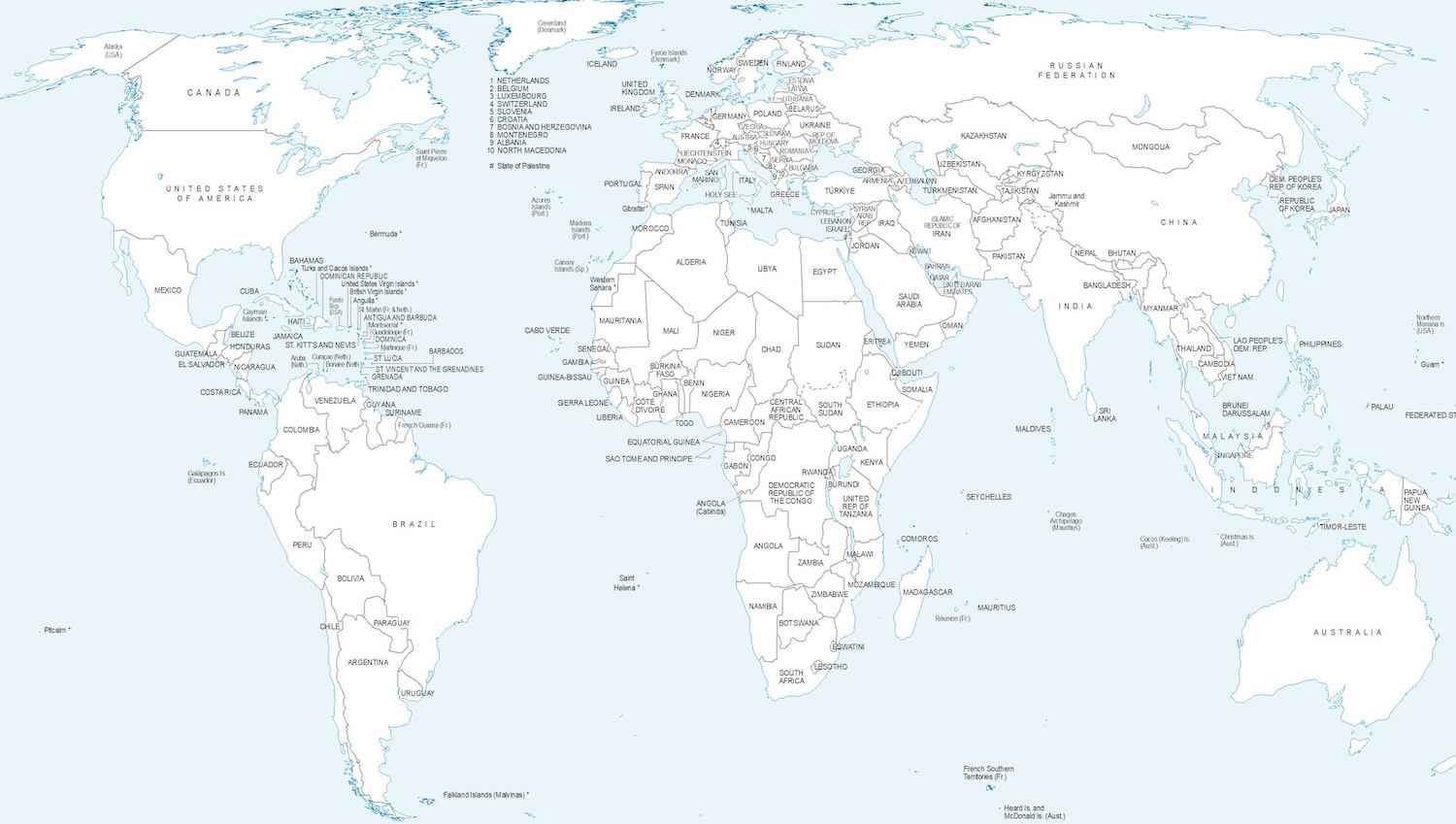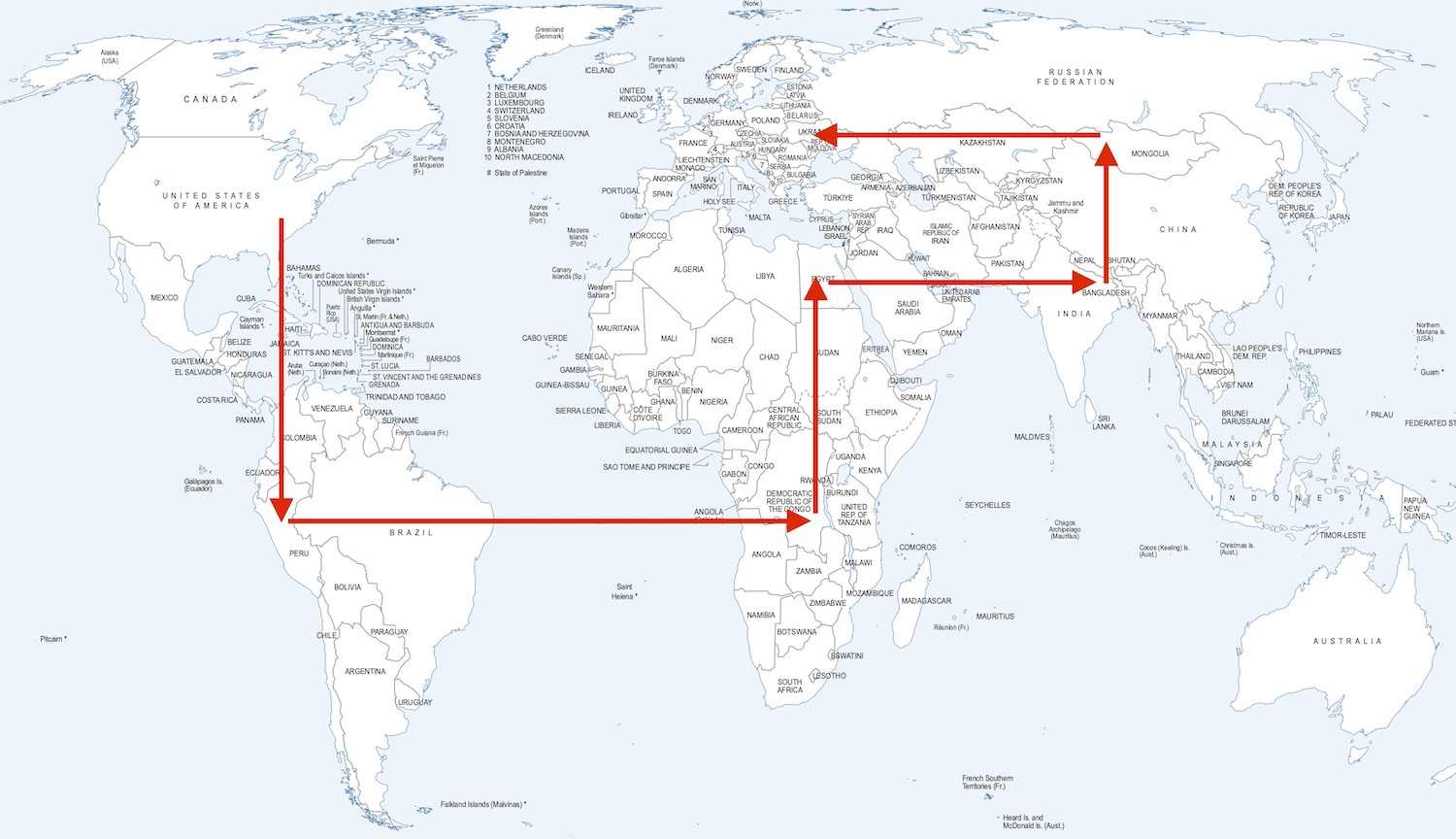Map Trace
This puzzle first involves a map. The map can be mounted on the wall or made available in a box. The map can be of real or imaginary places. It can be global or for a local area. It does not matter but the location and scale should match the theme of the escape room.
For the example below, I am using a digital world map provided by the UN. This map likely has more detail than is easily printed for use by players. For a world map, consider using a commercially printed map. You might already have a large-format world map in your house. Or perhaps you have a globe. Or you might even have a board game with a convenient map printed on its board such as Risk or Pandemic.
The second clue of this puzzle involves a collection of locations on this map. The players might find multiple airline tickets with the following departures and destinations. (They are shown in a table here for brevity, but it will be more interesting to provide each of these transfers on their own card.)
| Depart | Arrive |
|---|---|
| DR of the Congo | Egypt |
| Egypt | India |
| India | Mongolia |
| Mongolia | Ukraine |
| Peru | DR of the Congo |
| United States | Peru |
An optional third component of this puzzle is a hint for the proper order of the locations. In this example, the connections of the departures to arrivals trace out a path. Another clue could be to assign a date to each location or order by some property of the locations (such as population). If players are expected to reorder them, it is best to provide each location on a separate card to make sorting easier. For a simpler puzzle, simply provide the list of locations in the proper order.
Given the clue above, the order in which the locations were visited are as follows.
| Location |
|---|
| United States |
| Peru |
| DR of the Congo |
| Egypt |
| India |
| Mongolia |
| Ukraine |
Once the players have determined the proper order of locations, they have to trace out the path on the provided map.
A key feature of this path is that each segment goes primarily in a cardinal direction: north, south, east, or west. In this example, the path goes south, east, north, east, north, west.
This sequence of directions is finally used to open a directional lock with the directions corresponding to the directions on the map. In this case, the lock opens up with the code down, right, up, right, up, left.

